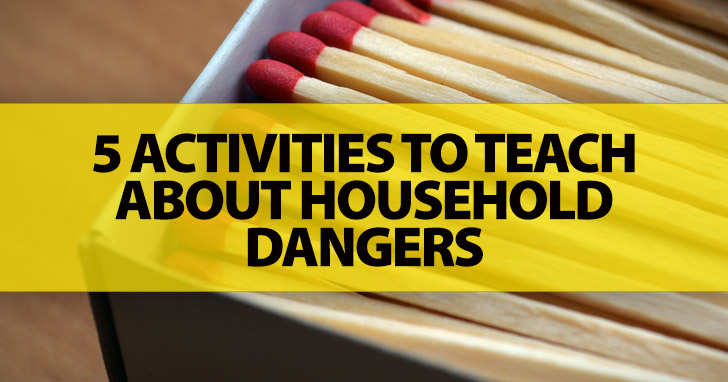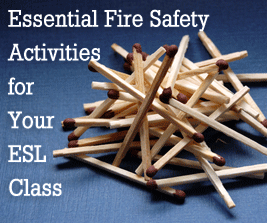Warning: 5 Activities To Teach About Household Dangers


Fire prevention week happens each year in October, but there is no need to wait until the fall to help your students stay safe when it comes to fires. The winter season is just as likely a time for fires since candles, fireplaces and heaters can all cause house fires. Make sure your students are safe by dedicating some of your language learning practice to fire safety.

Talking About Fire Safety
How much do your students already know about fire safety? Find out by breaking your class into discussion groups to talk about household fires. Ask one person to take notes for each group, writing the answers that they come up with together. If your students are unfamiliar with some of the vocabulary in the questions, allow them to use an English/English dictionary to look the words up in their groups. You can give your groups these discussion questions, or use questions of your own.
After the groups have had a chance to discuss all the questions, bring the class back together to share their answers.
Listening About Fire Safety
Once your students have started thinking about fire safety, give them some specifics on how to be safe in case of a fire. Start by pointing out the fire safety elements that are in place in your classroom and your school. These might include sprinklers, smoke detectors or fire extinguishers. Part of being safe in a fire also includes having two exits from every room. You may have safety ladders on the windows, and you probably have an evacuation plan posted in the classroom. Show each of these elements to your students and allow them to ask questions or make comments.
After pointing out what you have in place in the school, show your class a completed home fire escape plan. A fire escape plan is a diagram of a home which points out fire safety elements. It should show all the windows and doors in a home as well as the location of fire extinguishers, smoke alarms and exits to each room. The plan should also designate a family meeting place in case of an emergency. You can find a completed home fire escape plan online, but if you do not have one for your own residence, now is a good time to put one together.
As you review the home fire escape plan with your class, this may also be an opportune time to review some vocabulary used for items inside the home. You should go over the names of different rooms (kitchen, living room, bedroom, dining room, etc.), types of furniture (couch, sofa, table, recliner, bunk bed, etc.), and directional words for talking about an escape route (e.g. go left out the front door to the corner, or at the end of the hall go out the window and use the fire escape). This can also be a good time to review prepositions of place as you explain the layout of the home.
Personal Fire Safety
You have walked your class through another family’s fire escape plan, and now each person should create his own. Supply your class with graph paper for their diagrams. You may want to discuss how the squares on the paper should be proportional to the size of their rooms at home. (You may need to give your class a chance to measure their houses and/or get help from their parents to make the fire escape plan.) For the fire escape plan, each person should label the rooms, the fire safety features in the home, and if you choose, the furniture in the house. Each plan should also include a meeting place outside the home in case of an emergency. Then, have your students take their completed plans home to review with their families.
Reading Comprehension and Grammar Practice
What should you do if you find yourself in a fire? This is a good question to start a review of the conditional tense with your students. Before practicing this type of advice giving, review with your class the basic rules of fire safety. You can find a straightforward list of fire safety rules. Make a copy for each of your students and give them some time to read and review the rules. Then partner your students together to practice the conditional structure using the rules they have in front of them. The first person should ask a question whose answer can be found in the list of rules. The question should start, “What should you do if…” The second person should then find the answer among the rules and answer, “If ….then you should…” Then have students change roles for a second question. Continue for as long as students are able to think of questions and find their answers in the fire safety rules.
What have they learned from the talk about fire safety? What does each person know now that he or she did not know at the start of the lesson? Have each group share some of the things they learned with the rest of the class. Then everyone can go home knowing that they will be safe and knowledgeable in case of a house fire!